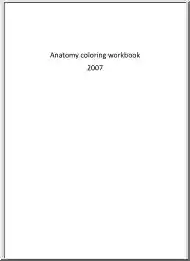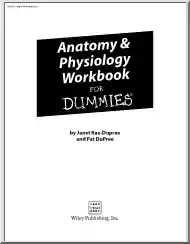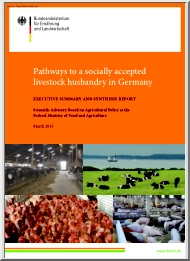No comments yet. You can be the first!
Content extract
Surgical ciliated cyst of the mandible secondary to simultaneous Le Fort I osteotomy and genioplasty: Report of case and review of the literature Sidney L. Bourgeois, Jr, DDS,a and Brenda L Nelson, DDS,b Bethesda, Md NATIONAL NAVAL MEDICAL CENTER (Oral Surg Oral Med Oral Pathol Oral Radiol Endod 2005;100:36-9) Maxillary and mandibular odontogenic cysts containing respiratory epithelium have occasionally been reported.1-7 Marsland and Browne1 and Shear5 postulated the mechanism of this finding to be squamous metaplasia of the epithelium. Bhaskar8 and Hettwer3 each postulated that this represents prosoplasia of the lining epithelium of a cyst. Gorlin6 attributed the presence of respiratory epithelium in odontogenic cysts to the pluripotentiality of odontogenic epithelium. The phenomenon of implantation of respiratory epithelium during surgical procedures has only been rarely documented. The majority of reported cases of surgical ciliated (implantation) cysts have been reported in the
maxilla.4,9-13 The vast majority of these cases involves radical sinus surgery and are well reported in people of Asian ancestry.10,11 Only a few have been secondary to orthognathic surgery.12-14 The presumed mechanism for these cysts forming after orthognathic surgery is the result of sinus and/or nasal mucosa being trapped in the wound during closure.12,13 There have only been 4 cases reported in the mandible.15-18 Three cases were reported secondary to chin augmentation following genioplasty procedures utilizing osteocartilaginous nasal grafts. It was proposed that transplantation of respiratory epithelium attached to the graft had proliferated in the favorable healing environment of the grafted site.15-17 A more recent case was reported in the mandible secondary to simultaneous maxillary and mandibular orthognathic surgical procedures.18 We report a case of a surgical ciliated (implantation) cyst of the anterior mandible secondary to a simultaneous Le Fort I osteotomy and sliding
genioplasty. a Staff, Oral and Maxillofacial Surgery, National Naval Medical Center, Bethesda, Md. b Staff, Oral and Maxillofacial Pathology, Naval Postgraduate Dental School, National Naval Medical Center, Bethesda, Md. Received for publication Sep 17, 2004; returned for revision Dec 2, 2004; accepted for publication Dec 21, 2004. 1079-2104/$ - see front matter Ó 2005 Elsevier Inc. All rights reserved doi:10.1016/jtripleo200412013 36 CASE REPORT A 27-year-old Caucasian female presented for evaluation of 2 radiolucencies in the mandible, one located in the area of teeth numbers 21 and 22, the other in the area of teeth numbers 24 and 25. In May 1996 the patient had undergone Le Fort I, vertical zygomaticomaxillary, and sliding genioplasty osteotomies as well as submental liposuction. The patient’s postoperative course was uneventful. In January, 1997 the patient underwent pulp testing of teeth 22-27 for unknown reasons. All teeth demonstrated no response to thermal or electric
pulp testing. In May 2000, the patient suffered blunt trauma to the chin. The patient suffered a mandibular vestibular laceration apical to teeth numbers 24 and 25. The injury was closed primarily. A panoramic radiograph (dated May 1, 2000) (Fig 1) was taken which shows 2 radiolucent areas in the mandible, one beneath the chin plate in the area teeth numbers 24 and 25 and the other apical to teeth numbers 21 and 22 anterior to the mental foramen. These radiolucent areas did not appear to be in contact with the apices of the respective teeth. Radiographs taken in July 2003 (Fig 2) showed no enlargement of the radiolucencies, with the most anterior radiolucency measuring approximately 0.8 3 08 cm round, and the most posterior one measuring approximately 1 3 1cm round. The patient underwent endodontic evaluation of teeth 20-23 and 28. Teeth 20 and 21 demonstrated no response to thermal testing, and all teeth demonstrated normal responses to electric pulp testing. These radiolucent areas
remained asymptomatic and the patient was referred to the Oral and Maxillofacial Surgery Service at the National Naval Medical Center, Bethesda, Md, for evaluation of these 2 radiolucent areas in December 2003. A panoramic radiograph demonstrated 2 radiolucent areas without an increase in size. The patient was informed that the differential diagnosis included periapical granuloma, radicular cyst, lateral periodontal cyst, odontogenic keratocyst, central giant cell granuloma, and ameloblastoma. The patient was taken to the operating room for removal of hardware and excisional biopsy of the lesions under general anesthesia. The lesion in the area of teeth numbers 24 and 25 was thick and spongy in nature, was completely enucleated with curettes, and sent for microscopic examination. The lesion in the area of teeth numbers 21 and 22 was then approached. A milky-white semipurulent aspirate was noted. The lesion was enucleated and clinically resembled a cyst with a thin wall. The lesion had
perforated the lingual cortex into the floor of the mouth. This specimen was also sent for microscopic diagnosis. The patient had a normal postoperative course and was informed of the results of the biopsy and told of the need for periodic radiographic examinations. OOOOE Volume 100, Number 1 Bourgeois and Nelson 37 Fig 1. Post-orthognathic surgery radiograph with radiolucent lesions Fig 3. Photomicrograph of ciliated epithelial cyst lining tissue which is interspersed with numerous strips and cords of pseudostratified columnar and ciliated epithelium which formed numerous cystic areas. A comment accompanied the pathology report: ‘‘If this lesion were found within the maxilla following the surgical procedures noted, this lesion would be termed a surgical ciliated cyst’’ (Fig 3). Fig 2. Periapical of radiolucent lesion in area of teeth 21 and 22. The lesion between teeth 24 and 25 was microscopically diagnosed as degenerating fibrous connective tissue and nonvital bone.
The lesion between teeth 21 and 22 was diagnosed as ciliated cyst, without other details. The specimen consisted of an ovoid mass of primarily fibrous connective DISCUSSION Although there are several odontogenic cysts and tumors that can be found in this region, there is no history or radiographic evidence of a lesion being present prior to the orthognathic surgical procedures (Fig 4). Our patient did not have a history of grafting coincident with the sliding genioplasty. Like Koutlas et al18 in their article OOOOE July 2005 38 Bourgeois and Nelson Fig 4. Pre-orthognathic surgery radiograph without radiolucent lesions reporting a case of a cystic lesion in the area posterior mandible coincident with Le Fort I and sagittal split ramus osteotomies, we believe that the cystic lesion in our patient was secondary to accidental implantation of tissue from the maxilla which included respiratory epithelium. We do not believe that squamous metaplasia is the mechanism of this entity.
Although we do not have the operative details from the original orthognathic surgery, it is our belief that a reciprocating saw was used to perform both the Le Fort I and sliding genioplasty osteotomies. We further believe that the sliding genioplasty was performed following the Le Fort I osteotomy We believe that sinus mucosa was trapped on the saw blade following the Le Fort I osteotomy and transplanted to the mandible. We offer the following advice as a means to avoid this transplantation of tissue from one surgical site to another. The most definite way to avoid such a complication would be to use a new saw blade to perform the mandibular osteotomy. This assumes the maxillary osteotomy is performed first. We realize that this increases the cost of health care and therefore offer 2 additional methods. First, the surgeon could consider performing the mandibular osteotomy initially. Second, if the surgeon chooses to perform the maxillary procedure first, and not utilize a second saw
blade for the mandibular procedures, we recommend meticulous cleaning of the saw blade by the surgical scrub technologist after completion of the maxillary procedure, ensuring that no tissue remains attached to the saw blade before beginning the mandibular procedure. We also recommend close inspection of the osteotomy for any aberrant tissue prior to fixation and copious irrigation of the surgical site prior to closure. REFERENCES 1. Marsland EA, Browne RM Two odontogenic cysts, partially lined with ciliated epithelium. Oral Surg Oral Med Oral Pathol Oral Radiol Endod 1965;19:502-7. 2. Piecuch JF, Eisenberg E, Segal D, Carlson R Respiratory epithelium as an integral part of an odontogenic keratocyst: report of a case. J Oral Surg 1980;38:445-7 3. Hettwer KJ Large cyst of the mandible partially lined by ciliated epithelium. J Oral Maxillofac Surg 1982;40:185-7 4. Yamazaki M, Cheng J, Nomura T, Saito C, Hayashi T, Saku T Maxillary odontogenic keratocyst with respiratory epithelium: a
case report. J Oral Pathol Med 2003;32:496-8 5. Shear M Secretory epithelium in the lining of dental cysts J Dent Assoc S Afr 1960;15:117-22. 6. Gorlin RJ Potentialities of oral epithelium manifested by mandibular dentigerous cysts. Oral Surg Oral Med Oral Pathol Oral Radiol Endod 1957;10:271-84. 7. Small EW Ciliated epithelium lining a mandibular dentigerous cyst: report of case. J Oral Surg 1967;25:260-3 8. Bhaskar SM Comment J Oral Surg 1967;25:264 9. Royer RQ, Stafne EC Cyst of jaw lined with ciliated epithelium: report of a case. Oral Surg Oral Med Oral Pathol Oral Radiol Endod 1964;18:14-5. 10. Kaneshiro S, Nakajima T, Yoshikawa Y, Iwasaki H, Tokiwa N The postoperative maxillary cyst: report of 71 cases. J Oral Surg 1981;39:191-8. 11. Miller R, Longo J, Houston G Surgical ciliated cyst of the maxilla. J Oral Maxillofac Surg 1988;46:310-2 12. Sugar AW, Walker DM, Bounds GA Surgical ciliated (postoperative maxillary) cysts following mid-face osteotomies Br J Oral Maxillofac Surg
1990;28:264-7. 13. Hayhurst DL, Moenning JE, Summerlin DJ, Bussard DA Surgical ciliated cyst: a delayed complication in a case of maxillary orthognathic surgery. J Oral Maxillofac Surg 1993; 51:705-8. 14. Amin M, Witherow H, Lee R, Blenkinsopp P Surgical ciliated cyst after maxillary orthognathic surgery: report of a case. J Oral Maxillofac Surg 2003;61:138-41. OOOOE Volume 100, Number 1 15. Aufricht G Combined nasal plastic and chin plastic: correction of microgenia by osteocartilaginous transplant from large hump nose. Am J Surg 1934;25:292-6 16. Nastri AL, Hookey SR Respiratory epithelium in a mandibular cyst after grafting of autogenous bone. Int J Oral Maxillofac Surg 1994;23:372-3. 17. Anastassov GE, Lee H Respiratory mucocele formation after augmentation genioplasty with nasal osteocartilaginous graft. J Oral Maxillofac Surg 1999;57:1263-5. 18. Koutlas IG, Gillum RB, Harris MW, Brown BA Surgical (implantation) cyst of the mandible with ciliated respiratory Bourgeois and
Nelson 39 epithelial lining: a case report. J Oral Maxillofac Surg 2002;60: 324-5. Reprint requests: Dr Sidney Lawrence Bourgeois Oral and Maxillofacial Surgery National Naval Medical Center 8901 Wisconsin Avenue Bethesda, MD 20889 slbourgeois@bethesda.mednavymil
maxilla.4,9-13 The vast majority of these cases involves radical sinus surgery and are well reported in people of Asian ancestry.10,11 Only a few have been secondary to orthognathic surgery.12-14 The presumed mechanism for these cysts forming after orthognathic surgery is the result of sinus and/or nasal mucosa being trapped in the wound during closure.12,13 There have only been 4 cases reported in the mandible.15-18 Three cases were reported secondary to chin augmentation following genioplasty procedures utilizing osteocartilaginous nasal grafts. It was proposed that transplantation of respiratory epithelium attached to the graft had proliferated in the favorable healing environment of the grafted site.15-17 A more recent case was reported in the mandible secondary to simultaneous maxillary and mandibular orthognathic surgical procedures.18 We report a case of a surgical ciliated (implantation) cyst of the anterior mandible secondary to a simultaneous Le Fort I osteotomy and sliding
genioplasty. a Staff, Oral and Maxillofacial Surgery, National Naval Medical Center, Bethesda, Md. b Staff, Oral and Maxillofacial Pathology, Naval Postgraduate Dental School, National Naval Medical Center, Bethesda, Md. Received for publication Sep 17, 2004; returned for revision Dec 2, 2004; accepted for publication Dec 21, 2004. 1079-2104/$ - see front matter Ó 2005 Elsevier Inc. All rights reserved doi:10.1016/jtripleo200412013 36 CASE REPORT A 27-year-old Caucasian female presented for evaluation of 2 radiolucencies in the mandible, one located in the area of teeth numbers 21 and 22, the other in the area of teeth numbers 24 and 25. In May 1996 the patient had undergone Le Fort I, vertical zygomaticomaxillary, and sliding genioplasty osteotomies as well as submental liposuction. The patient’s postoperative course was uneventful. In January, 1997 the patient underwent pulp testing of teeth 22-27 for unknown reasons. All teeth demonstrated no response to thermal or electric
pulp testing. In May 2000, the patient suffered blunt trauma to the chin. The patient suffered a mandibular vestibular laceration apical to teeth numbers 24 and 25. The injury was closed primarily. A panoramic radiograph (dated May 1, 2000) (Fig 1) was taken which shows 2 radiolucent areas in the mandible, one beneath the chin plate in the area teeth numbers 24 and 25 and the other apical to teeth numbers 21 and 22 anterior to the mental foramen. These radiolucent areas did not appear to be in contact with the apices of the respective teeth. Radiographs taken in July 2003 (Fig 2) showed no enlargement of the radiolucencies, with the most anterior radiolucency measuring approximately 0.8 3 08 cm round, and the most posterior one measuring approximately 1 3 1cm round. The patient underwent endodontic evaluation of teeth 20-23 and 28. Teeth 20 and 21 demonstrated no response to thermal testing, and all teeth demonstrated normal responses to electric pulp testing. These radiolucent areas
remained asymptomatic and the patient was referred to the Oral and Maxillofacial Surgery Service at the National Naval Medical Center, Bethesda, Md, for evaluation of these 2 radiolucent areas in December 2003. A panoramic radiograph demonstrated 2 radiolucent areas without an increase in size. The patient was informed that the differential diagnosis included periapical granuloma, radicular cyst, lateral periodontal cyst, odontogenic keratocyst, central giant cell granuloma, and ameloblastoma. The patient was taken to the operating room for removal of hardware and excisional biopsy of the lesions under general anesthesia. The lesion in the area of teeth numbers 24 and 25 was thick and spongy in nature, was completely enucleated with curettes, and sent for microscopic examination. The lesion in the area of teeth numbers 21 and 22 was then approached. A milky-white semipurulent aspirate was noted. The lesion was enucleated and clinically resembled a cyst with a thin wall. The lesion had
perforated the lingual cortex into the floor of the mouth. This specimen was also sent for microscopic diagnosis. The patient had a normal postoperative course and was informed of the results of the biopsy and told of the need for periodic radiographic examinations. OOOOE Volume 100, Number 1 Bourgeois and Nelson 37 Fig 1. Post-orthognathic surgery radiograph with radiolucent lesions Fig 3. Photomicrograph of ciliated epithelial cyst lining tissue which is interspersed with numerous strips and cords of pseudostratified columnar and ciliated epithelium which formed numerous cystic areas. A comment accompanied the pathology report: ‘‘If this lesion were found within the maxilla following the surgical procedures noted, this lesion would be termed a surgical ciliated cyst’’ (Fig 3). Fig 2. Periapical of radiolucent lesion in area of teeth 21 and 22. The lesion between teeth 24 and 25 was microscopically diagnosed as degenerating fibrous connective tissue and nonvital bone.
The lesion between teeth 21 and 22 was diagnosed as ciliated cyst, without other details. The specimen consisted of an ovoid mass of primarily fibrous connective DISCUSSION Although there are several odontogenic cysts and tumors that can be found in this region, there is no history or radiographic evidence of a lesion being present prior to the orthognathic surgical procedures (Fig 4). Our patient did not have a history of grafting coincident with the sliding genioplasty. Like Koutlas et al18 in their article OOOOE July 2005 38 Bourgeois and Nelson Fig 4. Pre-orthognathic surgery radiograph without radiolucent lesions reporting a case of a cystic lesion in the area posterior mandible coincident with Le Fort I and sagittal split ramus osteotomies, we believe that the cystic lesion in our patient was secondary to accidental implantation of tissue from the maxilla which included respiratory epithelium. We do not believe that squamous metaplasia is the mechanism of this entity.
Although we do not have the operative details from the original orthognathic surgery, it is our belief that a reciprocating saw was used to perform both the Le Fort I and sliding genioplasty osteotomies. We further believe that the sliding genioplasty was performed following the Le Fort I osteotomy We believe that sinus mucosa was trapped on the saw blade following the Le Fort I osteotomy and transplanted to the mandible. We offer the following advice as a means to avoid this transplantation of tissue from one surgical site to another. The most definite way to avoid such a complication would be to use a new saw blade to perform the mandibular osteotomy. This assumes the maxillary osteotomy is performed first. We realize that this increases the cost of health care and therefore offer 2 additional methods. First, the surgeon could consider performing the mandibular osteotomy initially. Second, if the surgeon chooses to perform the maxillary procedure first, and not utilize a second saw
blade for the mandibular procedures, we recommend meticulous cleaning of the saw blade by the surgical scrub technologist after completion of the maxillary procedure, ensuring that no tissue remains attached to the saw blade before beginning the mandibular procedure. We also recommend close inspection of the osteotomy for any aberrant tissue prior to fixation and copious irrigation of the surgical site prior to closure. REFERENCES 1. Marsland EA, Browne RM Two odontogenic cysts, partially lined with ciliated epithelium. Oral Surg Oral Med Oral Pathol Oral Radiol Endod 1965;19:502-7. 2. Piecuch JF, Eisenberg E, Segal D, Carlson R Respiratory epithelium as an integral part of an odontogenic keratocyst: report of a case. J Oral Surg 1980;38:445-7 3. Hettwer KJ Large cyst of the mandible partially lined by ciliated epithelium. J Oral Maxillofac Surg 1982;40:185-7 4. Yamazaki M, Cheng J, Nomura T, Saito C, Hayashi T, Saku T Maxillary odontogenic keratocyst with respiratory epithelium: a
case report. J Oral Pathol Med 2003;32:496-8 5. Shear M Secretory epithelium in the lining of dental cysts J Dent Assoc S Afr 1960;15:117-22. 6. Gorlin RJ Potentialities of oral epithelium manifested by mandibular dentigerous cysts. Oral Surg Oral Med Oral Pathol Oral Radiol Endod 1957;10:271-84. 7. Small EW Ciliated epithelium lining a mandibular dentigerous cyst: report of case. J Oral Surg 1967;25:260-3 8. Bhaskar SM Comment J Oral Surg 1967;25:264 9. Royer RQ, Stafne EC Cyst of jaw lined with ciliated epithelium: report of a case. Oral Surg Oral Med Oral Pathol Oral Radiol Endod 1964;18:14-5. 10. Kaneshiro S, Nakajima T, Yoshikawa Y, Iwasaki H, Tokiwa N The postoperative maxillary cyst: report of 71 cases. J Oral Surg 1981;39:191-8. 11. Miller R, Longo J, Houston G Surgical ciliated cyst of the maxilla. J Oral Maxillofac Surg 1988;46:310-2 12. Sugar AW, Walker DM, Bounds GA Surgical ciliated (postoperative maxillary) cysts following mid-face osteotomies Br J Oral Maxillofac Surg
1990;28:264-7. 13. Hayhurst DL, Moenning JE, Summerlin DJ, Bussard DA Surgical ciliated cyst: a delayed complication in a case of maxillary orthognathic surgery. J Oral Maxillofac Surg 1993; 51:705-8. 14. Amin M, Witherow H, Lee R, Blenkinsopp P Surgical ciliated cyst after maxillary orthognathic surgery: report of a case. J Oral Maxillofac Surg 2003;61:138-41. OOOOE Volume 100, Number 1 15. Aufricht G Combined nasal plastic and chin plastic: correction of microgenia by osteocartilaginous transplant from large hump nose. Am J Surg 1934;25:292-6 16. Nastri AL, Hookey SR Respiratory epithelium in a mandibular cyst after grafting of autogenous bone. Int J Oral Maxillofac Surg 1994;23:372-3. 17. Anastassov GE, Lee H Respiratory mucocele formation after augmentation genioplasty with nasal osteocartilaginous graft. J Oral Maxillofac Surg 1999;57:1263-5. 18. Koutlas IG, Gillum RB, Harris MW, Brown BA Surgical (implantation) cyst of the mandible with ciliated respiratory Bourgeois and
Nelson 39 epithelial lining: a case report. J Oral Maxillofac Surg 2002;60: 324-5. Reprint requests: Dr Sidney Lawrence Bourgeois Oral and Maxillofacial Surgery National Naval Medical Center 8901 Wisconsin Avenue Bethesda, MD 20889 slbourgeois@bethesda.mednavymil




 When reading, most of us just let a story wash over us, getting lost in the world of the book rather than paying attention to the individual elements of the plot or writing. However, in English class, our teachers ask us to look at the mechanics of the writing.
When reading, most of us just let a story wash over us, getting lost in the world of the book rather than paying attention to the individual elements of the plot or writing. However, in English class, our teachers ask us to look at the mechanics of the writing.